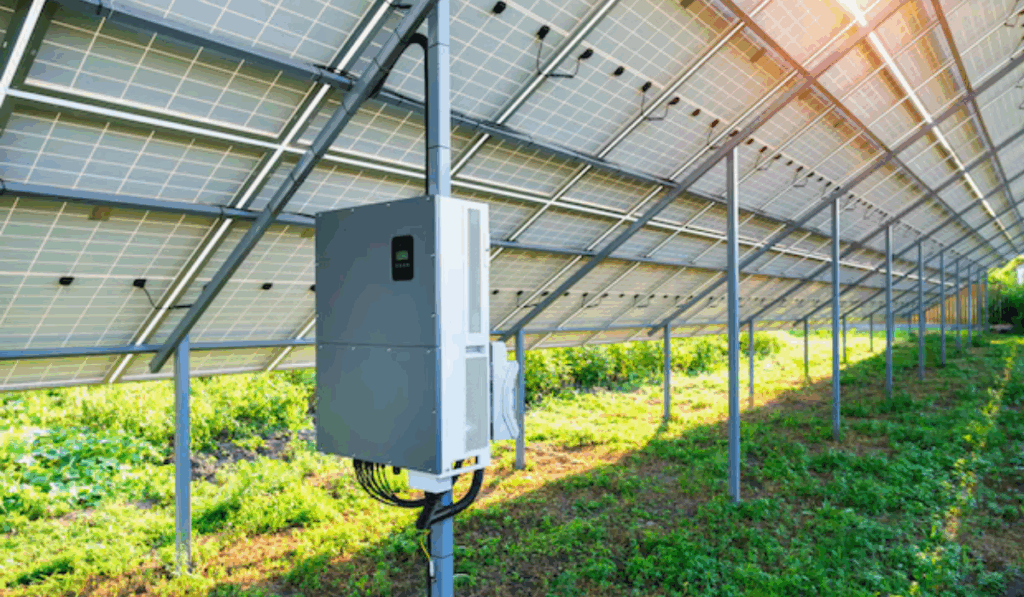Solar panels have become one of the most exciting technologies of the 21st century. From small rooftops to massive solar farms, they are helping the world move towards a cleaner, greener future. But have you ever wondered: how exactly do solar panels work? How do they turn sunlight — something we can’t even touch — into usable electricity that powers our lights, fans, and gadgets?
In this blog, we’ll break it down in a simple and easy-to-understand way!
What Are Solar Panels?
Solar panels are devices designed to capture sunlight and convert it into electricity.
They are made up of many smaller units called solar cells, usually made of a material called silicon.
Each solar cell works like a mini energy producer. When sunlight hits these cells, it triggers a special reaction called the photovoltaic effect, which is the magic behind solar energy generation.
The Science Behind It: The Photovoltaic Effect
The word “photovoltaic” comes from:
- “Photo” meaning light.
- “Voltaic” meaning electricity.
Here’s a simple step-by-step explanation:
- Sunlight hits the solar cell:
Solar cells are designed to absorb photons (particles of light). - Electrons get excited:
The energy from the sunlight knocks electrons loose from their atoms in the silicon. - Electric current is created:
These free electrons move around, creating a flow of electric current. - Wires capture the electricity:
The current is collected and directed through wires — this is electricity that can be used!
This electricity produced is initially direct current (DC). But our homes and appliances use alternating current (AC), so we need another step — an inverter — to make the electricity usable.
What Happens After the Electricity Is Generated?
Here’s what happens after solar panels create DC electricity:
- DC to AC Conversion:
The solar inverter converts DC electricity into AC electricity. - Powering Your Home:
The AC electricity powers your lights, TV, fridge, fans, and everything else. - Extra Electricity:
- If you produce more electricity than you use, it can be sent back to the electric grid (in grid-tied systems).
- If you have a battery backup, the extra energy can be stored for later use, like during the night.
Main Components of a Solar Panel System
A working solar system includes:
- Solar Panels: Capture sunlight.
- Inverter: Converts DC to AC electricity.
- Mounting Structure: Holds panels in place on the roof or ground.
- Battery (optional): Stores excess electricity.
- Monitoring System: Tracks how much power you’re generating.
Each part plays an important role in making solar energy available for everyday use.
How Efficient Are Solar Panels?
Solar panels can convert about 18% to 22% of sunlight into electricity today.
This might sound small, but with the huge amount of sunlight hitting the Earth, it’s more than enough to generate significant power!
Factors that affect efficiency include:
- The quality of the panels.
- The angle and direction they are installed.
- Weather conditions (more sunlight = more power).
Do Solar Panels Work on Cloudy Days?
Yes, they do!
Solar panels can still generate electricity on cloudy or rainy days, although the output may be lower. Modern panels are designed to capture a broad range of sunlight, including indirect light.
Even in less sunny areas, solar energy remains a powerful and reliable source of electricity.
A Quick Summary: How Do Solar Panels Work?
Here’s a short version:
🌞 Sunlight hits the panels → 🔋 Electrons get excited → ⚡ Electric current is generated → 🔄 Inverter converts it to usable AC electricity → 🏡 Power your home or business.
It’s that simple — but also that powerful!
Why It Matters
Understanding how solar panels work gives you a better appreciation for this amazing technology.
Solar energy is:
- Renewable (we’ll never run out of sunlight!),
- Clean (no pollution),
- Cost-effective (save on electricity bills),
- And eco-friendly (help the planet).
By using solar panels, you’re not just saving money — you’re helping create a better future for everyone.
Final Thoughts
Solar panels are a brilliant example of how we can use nature’s gifts to improve our lives. By capturing sunlight and turning it into electricity through the photovoltaic effect, solar panels offer a simple, smart, and sustainable energy solution.
Whether you’re thinking about installing a system or just curious about how they work, now you know the answer: Solar panels turn sunlight into electricity — cleanly, efficiently, and beautifully.
The future is bright — powered by the sun! 🌞

